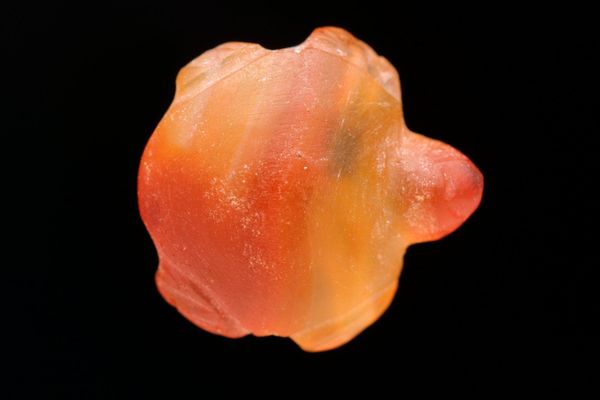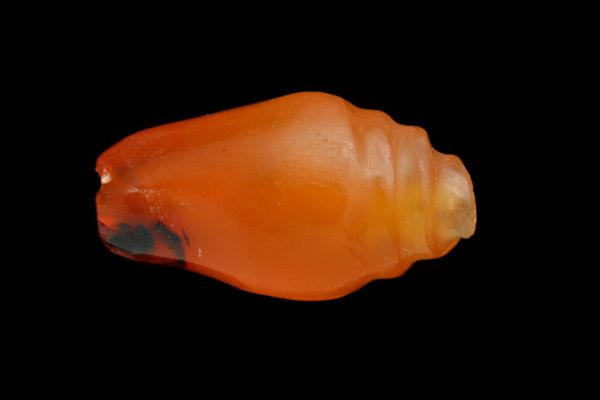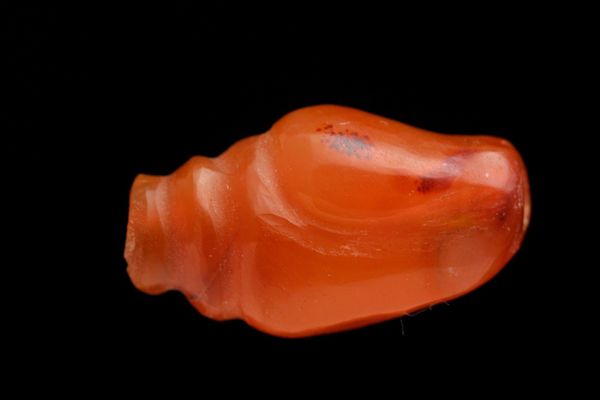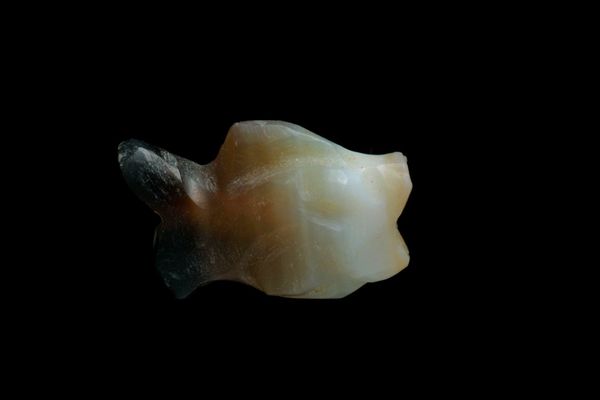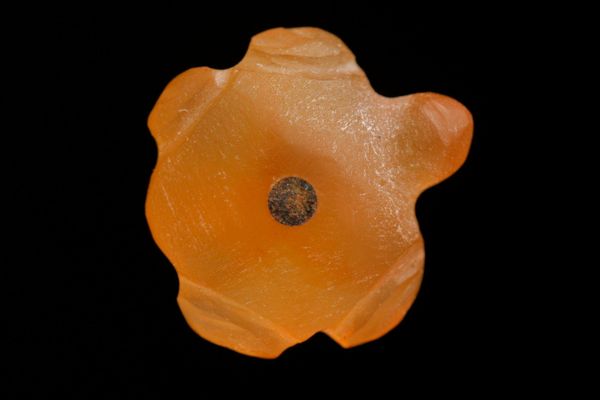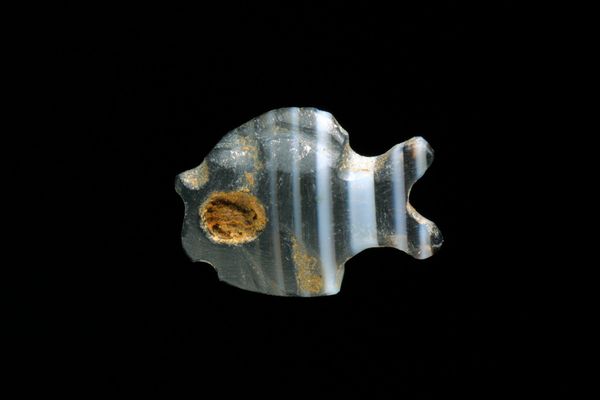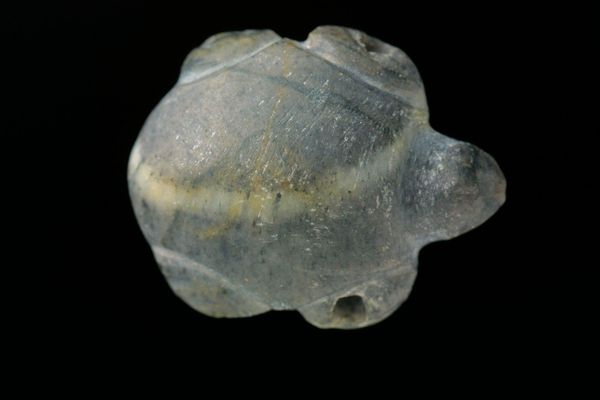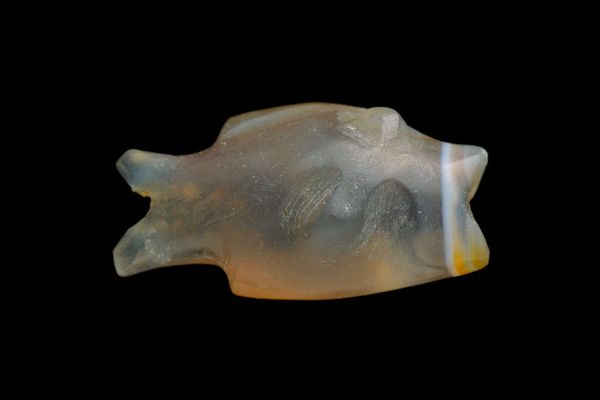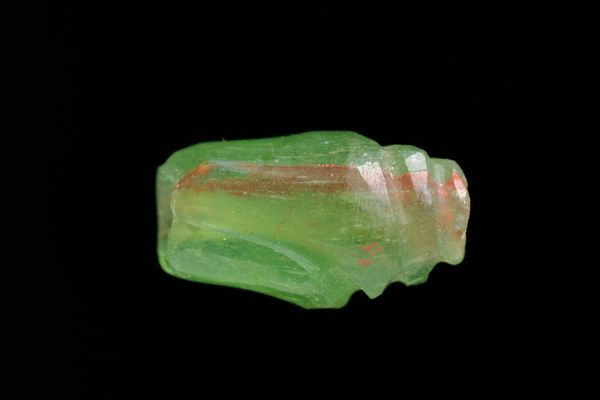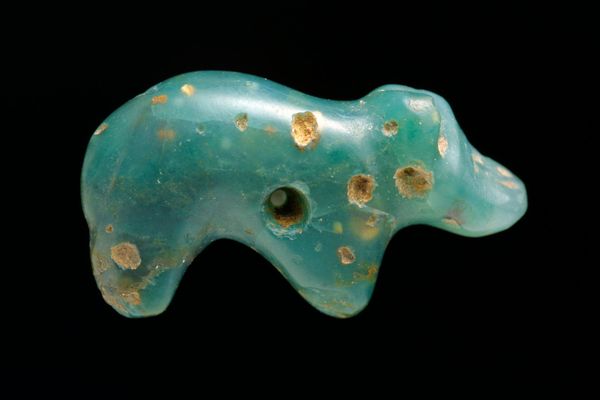
carving, sculpture
#
carving
#
geometric
#
ancient-mediterranean
#
sculpture
#
miniature
Dimensions: 5/16 x 1/2 x 1/2 in. (0.8 x 1.3 x 1.3 cm)
Copyright: Public Domain
Curator: This captivating artifact is a bead in the shape of a tortoise, dating back to somewhere between 501 and 800. It currently resides in the collection of the Minneapolis Institute of Art. Editor: The color is immediately striking—a warm, almost glowing orange. It makes me think of honey or amber, though in its simplicity it still appears solid. Curator: Its likely function as a bead suggests it played a role in adornment or even potentially a ritualistic context. We have to think about who would have had access to this type of crafted object within those early social hierarchies, the types of gendered labor associated with the carving of these precious items, and if the object carried additional signification for its user. Editor: Agreed. Given the craftsmanship, it represents a particular value—who produced this and by what techniques? The details may seem simple, but they point toward skillful carving from its creator. We must appreciate the physical process required. What tools were available? Curator: Precisely. It forces a consideration of available materials, technology and artistry, while for the person who wore the bead it may have offered the symbolic protective characteristics associated with tortoises in different indigenous traditions. Understanding this potential social dimension is also important. Were they emulating those characteristics? Is the artisan's decision to use those forms a factor of their immediate relationship with natural objects? Editor: Those layers of meaning tied to material culture make us examine the relationship between maker, consumer, and the broader network of resources and symbolic value in which this bead was crafted and used. I think those ideas and physical processes must be held together. Curator: Reflecting on it, this unassuming little bead really encapsulates entire worlds, both through labor practices of that society and our assumptions as beholders, doesn’t it? Editor: Indeed. It shows that even small objects are never really small, once you dive into the means through which they came to exist and what their existence might represent.
Comments
No comments
Be the first to comment and join the conversation on the ultimate creative platform.
